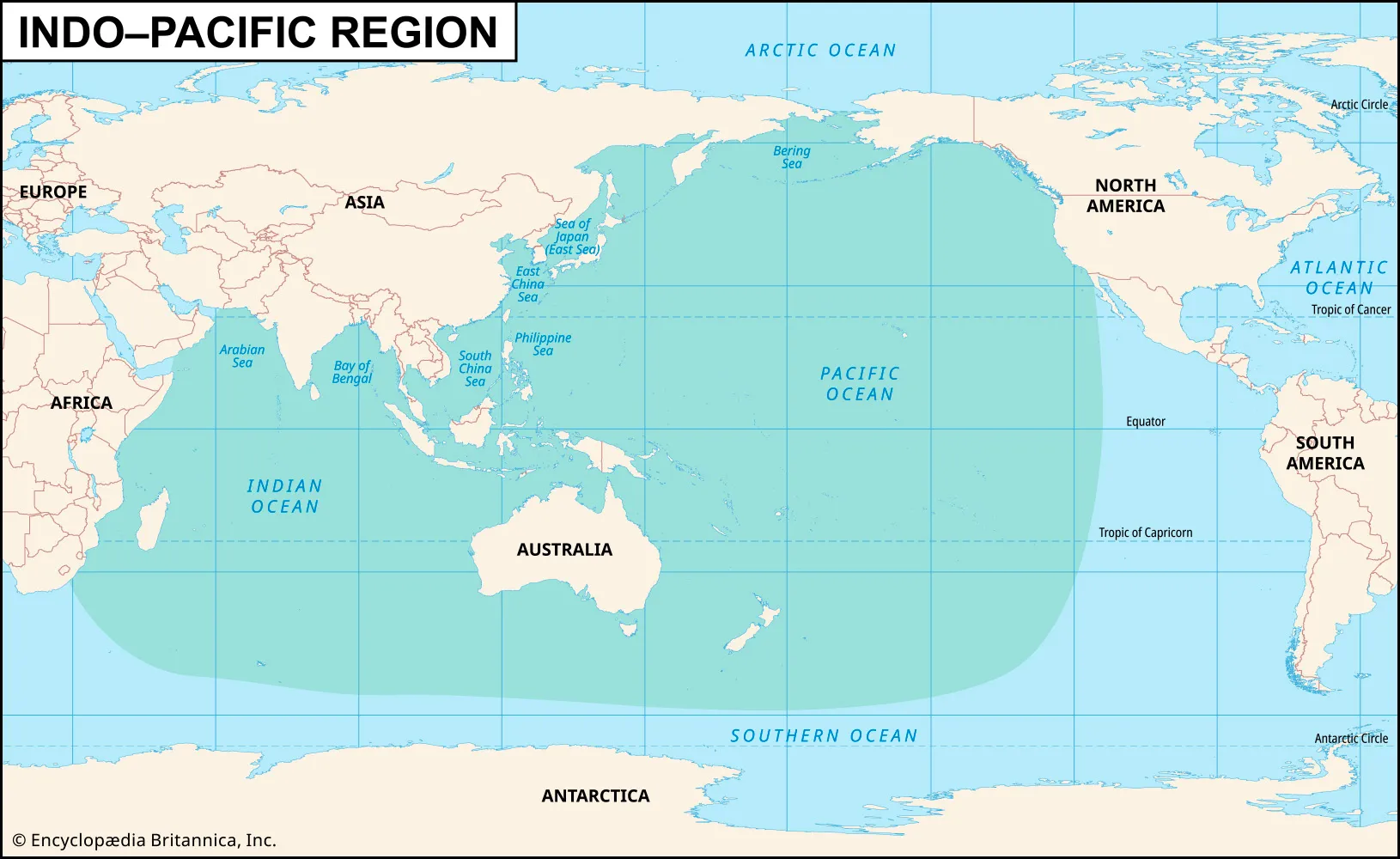- Filter By :
- Polity & Governance
- International Relations
- Social Justice
-
Q. "The Indo-Pacific is not just a geographic space but a strategic vision." Analyze India’s Indo-Pacific strategy in the backdrop of China’s assertiveness and evolving regional alliances. (250 words)
22 Jul, 2025 GS Paper 2 International RelationsApproach:
- Introduce the answer by briefing about significance of Indo-Pacific region for India with a current affair linkage
- Give arguments to Indo-Pacific as a Strategic Vision for India
- Delve into China’s Assertiveness as a Strategic Challenge
- Highlight Opportunities for India in Evolving Regional Alliances
- Give Measures to Strengthening India’s Indo-Pacific Strategy
- Conclude suitably.
Introduction:
The launch of the India-Middle East-Europe Economic Corridor (IMEC) at the G20 Summit in 2023 and India’s upcoming Chairmanship of the Indian Ocean Rim Association (2025–27) reflect India’s evolving approach to the Indo-Pacific as a strategic theatre, not just a geographic expanse.
Body:
Indo-Pacific as a Strategic Vision for India:
- Maritime Security & Strategic Autonomy: Over 95% of India’s trade by volume and energy imports traverse the Indo-Pacific, especially through chokepoints like the Strait of Hormuz and Malacca.
- India’s SAGAR (Security and Growth for All in the Region) doctrine and mission-based deployments signal its maritime-first approach in countering China's growing naval presence.
- Economic Growth and Trade Diversification: The Indo-Pacific underpins India’s efforts to de-risk from overdependence on China, by joining the Indo-Pacific Economic Framework (IPEF) and signing FTAs with Australia and UAE.
- India is leveraging the China+1 strategy to integrate into global supply chains, particularly in semiconductors, pharmaceuticals, and clean tech.
- Connectivity and Infrastructure Diplomacy: The IMEC corridor and revitalisation of the Chabahar Port indicate India’s intent to shape trans-regional connectivity.
- India’s launch of the Global Digital Public Infrastructure Repository (GDPIR) reflects its soft-power leadership through digital infrastructure.
- Blue Economy and Climate Resilience: India is leading ocean sustainability through IORA, Coalition for Disaster Resilient Infrastructure (CDRI), and Blue Economy initiatives, aiming to counter China's infrastructure-heavy BRI with climate-sensitive development..
China’s Assertiveness: A Strategic Challenge
- Maritime Militarisation: China’s expansion in South China Sea, development of dual-use ports in Djibouti, Gwadar, and Hambantota, and PLA Navy modernisation pose threats to SLOC security.
- Debt Diplomacy and Geo-economic Leverage: Through the Belt and Road Initiative (BRI), China has entrenched economic dependencies, which India counters through sustainable infrastructure diplomacy.
- China also has a geo-economic upper hand due to deeper pockets giving it an edge, while India struggles with funding gaps, tech catch-up, and slower project execution.
- Digital and Normative Contestation: China is promoting closed, state-centric digital infrastructure, in contrast to India’s open digital public goods model through GDPIR and G20 diplomacy.
Evolving Regional Alliances: Opportunities for India
- Mini-laterals and Strategic Convergences: Quad (India-USA-Japan-Australia) focuses on maritime security, supply chains, and emerging tech.
- India-France-Australia and India-Indonesia-Australia trilaterals foster issue-based coalitions in the Indian Ocean and Pacific theatres.
- Multilateral Economic Platforms: IPEF, though India opted out of the trade pillar, offers an avenue for supply chain resilience, clean economy, and fair standards.
- India’s participation in BIMSTEC and IPOI reinforces its presence in regional groupings with economic and security convergence.
Strengthening India’s Indo-Pacific Strategy
- Expand Maritime Capacity and Forward Presence: Accelerate naval modernisation, mission-based deployments, and develop dual-use logistics agreements with Indo-Pacific nations.
- Invest in deep-sea ports, MDA (Maritime Domain Awareness) systems, and coastal radar networks.
- Enhance Economic Integration: Deepen FTAs with ASEAN, Australia, UAE, and actively participate in supply chain, digital economy, and clean tech pillars of IPEF.
- Expand trade facilitation infrastructure, customs efficiency, and ease of doing business.
- If India aspires to be a major global player, it must become a $10 trillion economy in the next 10–15 years. This will require ramping up investments, improving project execution, and overcoming structural bottlenecks.
- Lead in Blue Economy and Climate Diplomacy: Use IORA chairmanship to mainstream blue economy, island sustainability, and climate financing under India-led platforms like ISA and CDRI.
Conclusion
India's Indo-Pacific vision must move from a patchwork of initiatives to a coherent, multi-dimensional strategy that blends security, economic integration, climate diplomacy, and civilizational leadership. “In the turbulent waters of the Indo-Pacific, nations that navigate with vision, values, and veracity will shape the tides of the future.”- India must rise as such a nation.
To get PDF version, Please click on "Print PDF" button.
Print PDF





